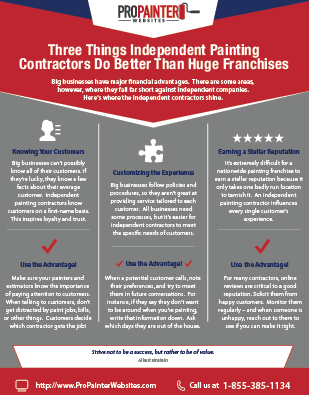Discover The Impact Of Seasonal Elements On The Performance Of Commercial Exterior Paint And Recognize The Optimal Times To Achieve Enduring Outcomes For Your Task
Discover The Impact Of Seasonal Elements On The Performance Of Commercial Exterior Paint And Recognize The Optimal Times To Achieve Enduring Outcomes For Your Task
Blog Article
Material By-Fox Whalen
When you're intending a business external painting project, seasonal elements can make or break your results. You'll want to take into consideration just how temperature and moisture effect paint application and drying out times. Selecting the best season can guarantee your paint adheres properly and lasts much longer. However which periods are truly the most effective for this sort of work? Let's explore the key elements that can affect your project's success.
The Influence of Temperature on Paint Application
When you're intending a commercial exterior paint job, the temperature can substantially impact how well the paint adheres and dries out.
Preferably, you want to repaint when temperatures vary in between 50 ° F and 85 ° F. If it's as well cool, the paint might not cure appropriately, bring about problems like peeling or fracturing.
On the flip side, if it's also warm, the paint can dry out as well promptly, protecting against appropriate adhesion and causing an uneven coating.
You must likewise think about the moment of day; early morning or late afternoon uses cooler temperature levels, which can be much more positive.
Constantly check the supplier's suggestions for the certain paint you're utilizing, as they typically supply guidance on the ideal temperature range for ideal outcomes.
Moisture and Its Impact on Drying Times
Temperature level isn't the only ecological element that influences your industrial external painting job; moisture plays a substantial role too. High moisture levels can reduce drying out times considerably, influencing the overall quality of your paint task.
When the air is saturated with wetness, the paint takes longer to cure, which can result in concerns like bad attachment and a greater risk of mildew development. If you're repainting on a particularly humid day, be prepared for prolonged delay times between layers.
It's crucial to check neighborhood climate condition and strategy accordingly. Preferably, go for humidity levels in between 40% and 70% for optimum drying.
Keeping these factors in mind ensures your job remains on track and provides an enduring coating.
Best Seasons for Commercial Exterior Paint Projects
What's the best time of year for your business external painting jobs?
Spring and very early loss are typically your best choices. Throughout these seasons, temperature levels are light, and moisture degrees are typically reduced, producing ideal conditions for paint application and drying.
Avoid painting contractor tulsa , which can trigger paint to completely dry as well swiftly, resulting in inadequate attachment and surface. Similarly, winter season's cool temperature levels can hinder appropriate drying and curing, risking the longevity of your paint task.
Go for days with temperature levels in between 50 ° F and 85 ° F for optimal results. Remember to examine the local weather prediction for rainfall, as damp problems can wreck your task.
Preparation around these elements guarantees your painting task runs smoothly and lasts longer.
Conclusion
In conclusion, preparing your industrial exterior paint tasks around seasonal factors to consider can make a substantial difference in the result. By scheduling job throughout the excellent temperatures and humidity degrees, you'll make certain much better adhesion and drying times. Remember to watch on neighborhood weather prediction and select the right time of year-- spring and very early autumn are your best bets. Taking these steps will aid you achieve a durable and professional coating that lasts.
